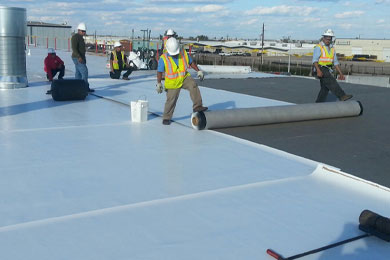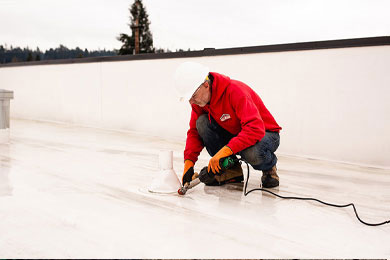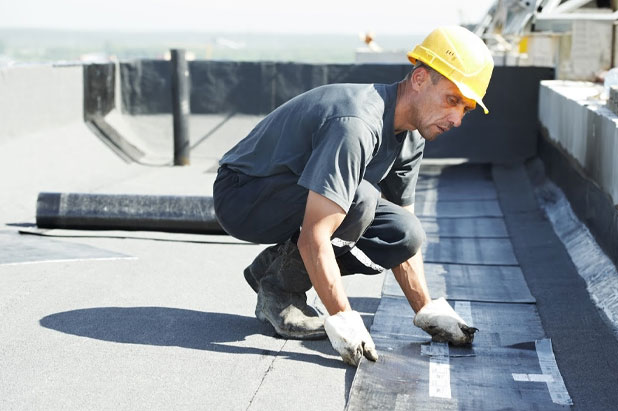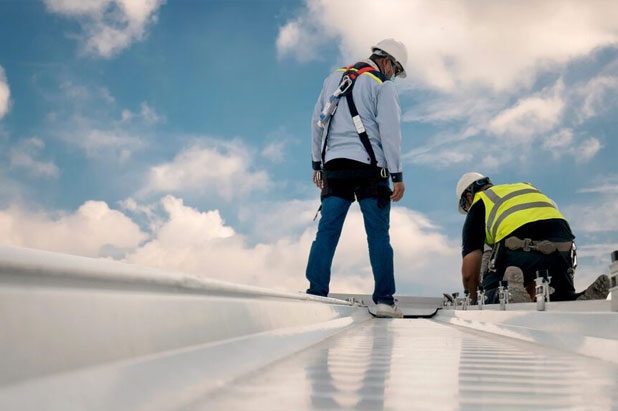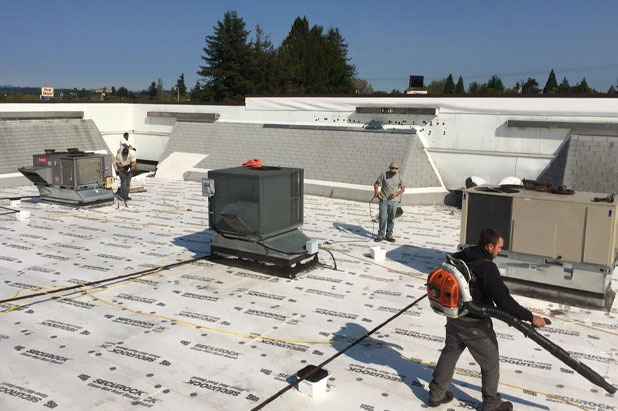Commercial Roofing
Commercial roofing is very different from residential roofing. It is of three major types: a) Flat roofs, b) Low-sloped roofs, and c) Pitched roofs.
he installation and repair of these roofs involve the following major skills:
1. The PVC Roof membranes are made by polymerizing vinyl chloride monomers, then adding plasticizers to increase flexibility. The EPDM (ethylene propylene diene terpolymer) single-ply rubber roofing membrane has been an appealing choice in the low-slope commercial roofing industry for over 40 years. The number one roofing choice of architects, roof consultants, and contractors for both new construction and replacement roofing projects according to market surveys from Building Design and Construction, Roofing/Siding/Insulation magazines, and the National Roofing Contractors Association (NRCA).

2. Modified Bitumen (MB) roofing is an asphalt-based, close cousin of the Built-up-Roof (BUR) designed for buildings with low-slope or “flat” roof structures. The industry defines SBS as asphalt that has been modified (thus the name modified bitumen) consisting of polymeric material SBS. Synthetic unique applications include: (a) hot-mop; (b)cold-application, (c) heat-welded (d) self-adhered APP (atactic polypropylene – is also modified bitumen) a plastic that allows the roofing membrane to achieve durability while providing protection against the damaging effects of UV rays. APP is typically only applied via a torch – this distinguishes APP from SBS.

3. SBF -a spray-applied cellular plastic, is made by mixing chemicals to create foam. Foam coating is a roofing system that is applied as a liquid using plural-component spray equipment that fills cracks and crevices. SBF expands approximately 30 times its original liquid volume to form a hard-closed cell monolithic roof surface. The Polyurethane Foam is efficient; it dries within seconds after being applied to the roof surface. Its effective, result is a weather-tight roofing membrane that is fully adhered to the substrate. This unintrusive polyurethane is lightweight; it can be used for remediation or repair.
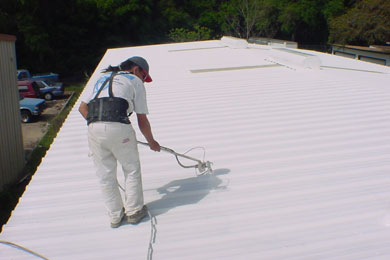
4. Commercial TPO stands for thermoplastic polyolefin, a single-ply roofing membrane that covers the surface of the roof. TPO is one of a few different types of rubber, a blend of polypropylene and ethylene-propylene rubber. The TPO roofer is in high demand. GAF provides an economic overview: TPO is a single-ply roofing membrane that has distinct advantages for roofing contractors, TPO is cost-effective price and its durability is matched by its performance in the roofing industry. The roof installers Heat-welded the seams to provide superior strength. TPO’s attributes include long-term heat, UV, and natural fungal resistance. It is flexibility without the need for plasticizers makes TPO a reliable low-slope roofing system. TPO has been in the roofing industry for 20+ years, it has become one of the most popular products used for low-slope roofing, according to GAF, with over 1 billion square feet installed annually, TPO makes up over 50 single-ply roofs.
